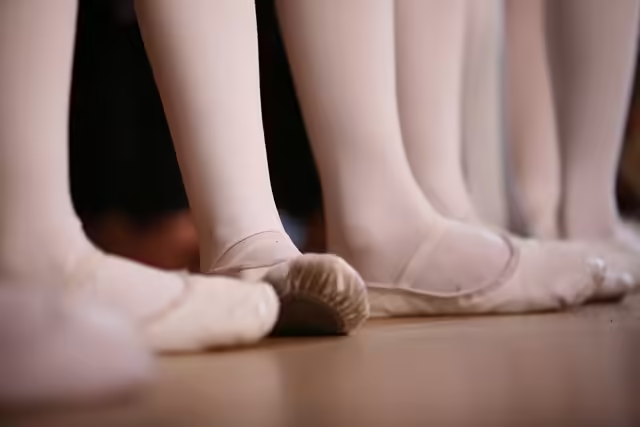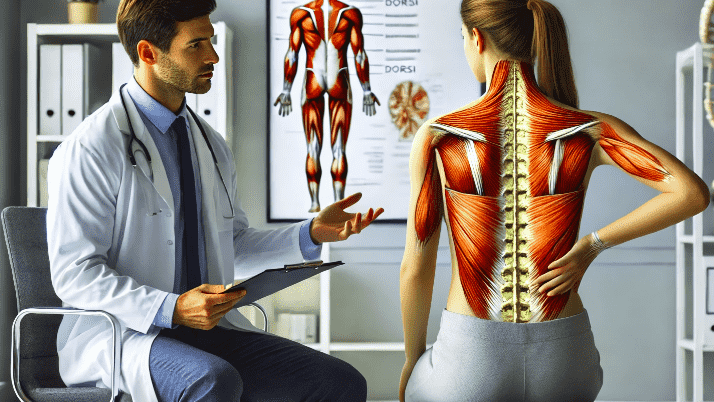The Ultimate Guide to Foot Health Tools: A Comprehensive Approach to Foot Care

Foot health is an essential aspect of overall well-being, yet it is often overlooked until discomfort or injury occurs. Our feet are the foundation of our mobility, and taking proper care of them is crucial, especially for those who are active, on their feet for long hours, or suffer from medical conditions affecting foot health. To maintain foot health, various foot health tools are available that can assist with everything from preventing injuries to enhancing comfort and promoting healing.
Table of Contents
ToggleIn this comprehensive guide, we will explore the importance of foot health, the types of foot health tools available, their benefits, and how to use them effectively for optimal foot care.
Understanding the Importance of Foot Health
Why Foot Health Matters
The human foot is an intricate structure composed of 26 bones, 33 joints, and over 100 muscles, tendons, and ligaments. This complex system allows us to walk, run, jump, and maintain balance. However, the feet are subjected to significant stress, especially for those who engage in high-impact activities or have conditions like diabetes or arthritis. Without proper care, foot problems can develop, leading to pain, mobility issues, and even long-term damage.
Maintaining proper foot health can prevent issues like plantar fasciitis, bunions, corns, calluses, and ingrown toenails. Regular care with the right foot health tools can help keep your feet in good condition, allowing you to lead an active, comfortable life.
Common Foot Problems
Before diving into the specific foot health tools, it’s essential to understand the common foot problems that these tools can help prevent or alleviate:
- Plantar Fasciitis: Inflammation of the plantar fascia, the band of tissue that runs across the bottom of your foot, causing heel pain.
- Bunions: A bony bump that forms on the joint at the base of your big toe, leading to pain and discomfort.
- Corns and Calluses: Hardened layers of skin that develop from friction and pressure.
- Flat Feet: A condition where the arches of the feet flatten, causing strain on the feet and legs.
- Ingrown Toenails: Occur when the edge of a toenail grows into the skin, causing pain and swelling.
Addressing these issues with appropriate foot health tools can alleviate pain, improve mobility, and prevent further complications.
Essential Foot Health Tools
There are a wide variety of foot health tools available, each designed to target specific foot care needs. These tools range from those that provide daily care to specialized devices for treating chronic conditions. Below are some of the most effective tools for maintaining foot health.
1. Orthotic Insoles and Arch Supports
What They Are
Orthotic insoles and arch supports are designed to provide additional support to the feet by correcting alignment and distributing pressure evenly across the foot. These inserts can be customized or bought over-the-counter and are particularly beneficial for individuals with flat feet, high arches, or plantar fasciitis.
Benefits
- Improves Foot Alignment: Helps correct misalignment that can cause pain in the feet, knees, hips, and lower back.
- Reduces Pain: Provides relief from conditions such as plantar fasciitis, heel spurs, and bunions.
- Enhances Comfort: Cushions the foot and absorbs impact, making walking and running more comfortable.
How to Use
To use orthotic insoles, simply place them inside your shoes. Ensure that they fit snugly and do not cause any discomfort. If using custom orthotics, follow the instructions from your healthcare provider or podiatrist.
2. Foot Massagers
What They Are
Foot massagers are devices designed to stimulate the muscles, tendons, and nerves in your feet through massage techniques such as rolling, kneading, or vibration. They can be manual, electric, or even water-based for hydrotherapy purposes.
Benefits
- Relieves Tension: Helps release tightness in the muscles, providing relief from soreness and fatigue.
- Improves Circulation: Encourages blood flow to the feet, which can help with healing and reduce swelling.
- Reduces Stress: Regular foot massages promote relaxation and reduce overall stress levels.
How to Use
Place your feet in the massager or roll your feet over a manual device for 10-15 minutes per session. Electric massagers often come with various settings, allowing you to adjust the intensity and type of massage.
3. Foot Stretching Devices
What They Are
Foot stretching devices, such as foot rockers and toe stretchers, are used to gently stretch the muscles and tendons in the feet. These devices are particularly useful for people suffering from plantar fasciitis, Achilles tendonitis, or tight calf muscles.
Benefits
- Increases Flexibility: Regular stretching helps to improve flexibility and range of motion in the feet and ankles.
- Prevents Injuries: Stretching reduces the risk of strains, sprains, and overuse injuries.
- Eases Pain: Alleviates tension in the plantar fascia and Achilles tendon, reducing pain from these common foot issues.
How to Use
Place your foot in the stretching device and follow the recommended instructions for the duration and frequency of stretching. Start slowly and increase the intensity as your flexibility improves.
4. Callus Removers and Pumice Stones
What They Are
Callus removers and pumice stones are tools used to exfoliate the skin on your feet, removing dead skin cells and softening rough patches. These tools are often used in combination with moisturizing creams to maintain soft, healthy skin on the feet.
Benefits
- Removes Dead Skin: Helps eliminate calluses and corns that can cause discomfort.
- Softens Feet: Regular exfoliation leaves the skin on your feet smooth and soft.
- Prevents Cracks: Keeps the skin from becoming too thick and dry, reducing the risk of painful cracks.
How to Use
After soaking your feet in warm water for 10-15 minutes, use the pumice stone or callus remover to gently scrub the hardened areas of your feet. Follow up with a moisturizer to lock in hydration.
5. Toe Separators
What They Are
Toe separators are small devices made from silicone or foam that fit between your toes, gently stretching and realigning them. These tools are commonly used to relieve foot pain caused by bunions, hammertoes, or overlapping toes.
Benefits
- Improves Toe Alignment: Helps to correct the positioning of the toes, which can alleviate pain and discomfort.
- Reduces Pressure: Eases pressure on the bunion joint and other areas of the foot, reducing pain.
- Promotes Flexibility: Encourages proper movement and flexibility in the toes.
How to Use
Place the toe separators between your toes and wear them for short periods throughout the day. Start with 15-30 minutes and gradually increase the duration as your feet adjust.
6. Foot Braces and Supports
What They Are
Foot braces and supports are devices worn to stabilize the foot and ankle, particularly after an injury or surgery. They provide compression and restrict movement to prevent further injury while promoting healing.
Benefits
- Stabilizes the Foot: Prevents excessive movement, which can worsen injuries like sprains or fractures.
- Reduces Swelling: Compression helps reduce swelling and inflammation after an injury.
- Promotes Healing: Keeps the foot in proper alignment, allowing the healing process to proceed more effectively.
How to Use
Foot braces should be worn as recommended by a healthcare professional, particularly after an injury or surgery. Make sure the brace fits comfortably and is not too tight, as this can restrict blood flow.
7. Foot Care Kits
What They Are
Foot care kits typically include a variety of foot health tools, such as nail clippers, files, cuticle pushers, and exfoliating tools. These kits are designed to help you maintain healthy feet at home by performing regular grooming and hygiene routines.
Benefits
- Maintains Foot Hygiene: Keeps nails trimmed, skin smooth, and feet clean, preventing infections and other foot problems.
- Prevents Ingrown Toenails: Proper nail care helps prevent painful ingrown toenails from developing.
- Promotes Overall Foot Health: Regular grooming helps detect any potential foot issues early on, allowing for prompt treatment.
How to Use
Use the tools in your foot care kit to regularly trim your toenails, remove dead skin, and clean the feet. Be gentle to avoid injuring the skin or nails.
Choosing the Right Foot Health Tools for Your Needs
Factors to Consider
When selecting foot health tools, it’s important to consider your specific needs, activity level, and any underlying conditions. Here are some key factors to keep in mind:
- Foot Conditions: If you have conditions like plantar fasciitis, bunions, or flat feet, opt for tools that target these specific issues, such as orthotic insoles or toe separators.
- Comfort: Choose tools that are comfortable to use and do not cause additional irritation or discomfort.
- Quality: High-quality materials and construction are important to ensure the effectiveness and longevity of the tools.
- Ease of Use: Tools should be easy to use at home, allowing you to integrate them into your foot care routine seamlessly.
Consulting a Professional
If you are unsure about which foot health tools are right for you, consider consulting a podiatrist or healthcare professional. They can recommend the most appropriate tools based on your specific foot health needs and provide guidance on how to use them correctly.
How to Incorporate Foot Health Tools into Your Routine
Daily Foot Care Routine
Incorporating foot health tools into your daily routine is crucial for maintaining healthy feet. A consistent routine can help prevent foot problems and alleviate existing issues. Here’s a suggested daily regimen to ensure you’re giving your feet the attention they deserve:
- Morning Check-In: Inspect your feet each morning. Look for any signs of redness, blisters, or swelling that could indicate a developing issue.
- Footwear Check: Always wear shoes that provide proper support, especially if you’re standing or walking for long periods. Place orthotic insoles or arch supports in your shoes to ensure you have the necessary cushioning and alignment.
- Midday Break: If you’re on your feet for extended hours, take time to sit down and elevate your feet. You can use a small foot massager or rolling foot massager to reduce tension in your feet.
- Evening Care: After your day, soak your feet in warm water for 10-15 minutes. Follow this with gentle exfoliation using a pumice stone or callus remover, then apply a moisturizing cream to keep your skin soft and hydrated.
- Stretching Routine: Use foot stretching devices or perform basic stretches like ankle circles and calf stretches to maintain flexibility and avoid tightness in the plantar fascia and Achilles tendon.
Weekly Foot Health Regimen
To supplement your daily routine, a more in-depth weekly foot care regimen can ensure long-term health. Here’s what you can do once or twice a week:
- Full Foot Massage: Whether you use an electric foot massager or manual tools, dedicate 15-20 minutes to a relaxing foot massage. This not only relieves muscle tension but also improves circulation.
- Deep Exfoliation: Focus on removing any hard skin or calluses that have built up during the week. Use a callus remover tool and follow it up with moisturizing foot masks for intense hydration.
- Toe Care: Use toe separators to stretch and align your toes, especially if you suffer from bunions or hammertoes. Wear them for 15-30 minutes while relaxing.
- Nail Grooming: Trim your toenails using the clippers from your foot care kit to prevent ingrown toenails. Make sure to cut them straight across to avoid encouraging the nail to grow into the skin.
Monthly Foot Health Check-Up
Every month, it’s essential to review your foot health in a more thorough manner. Here’s what to include in your monthly foot check-up:
- Foot Condition Evaluation: Check if your existing foot health tools are providing relief. If you notice that certain problems persist, such as heel pain from plantar fasciitis, consult with a podiatrist for more advanced treatments or changes in your orthotics.
- Upgrade or Replace Tools: Certain foot health tools, such as insoles or massagers, may wear down with use. Ensure you’re using tools that are in good condition and providing adequate support. Replace them as needed.
- Consult a Professional: If you’ve been using foot health tools to manage specific conditions and have seen little to no improvement, it’s time to consult a podiatrist or foot specialist. They can provide professional guidance and may recommend custom orthotics or more specialized care.
The Benefits of Using Foot Health Tools
Prevention of Foot Problems
One of the primary benefits of using foot health tools is preventing the onset of common foot conditions. By incorporating orthotics, insoles, and foot braces, you can prevent misalignment issues that lead to chronic conditions like plantar fasciitis or Achilles tendonitis. Regular foot massage and stretching also help mitigate the risk of sprains and strains, especially for athletes and active individuals.
Enhanced Comfort and Mobility
Whether you’re standing, walking, or running, your feet need to be well-cushioned and supported. Foot health tools, like orthotic insoles and arch supports, help distribute body weight evenly, reducing pressure on the feet and enhancing comfort. This, in turn, allows you to maintain greater mobility without discomfort.
Faster Recovery from Injuries
For those dealing with foot injuries, using the right foot health tools can accelerate the healing process. Foot braces and compression wraps stabilize injured areas, reducing inflammation and allowing the body to heal more effectively. Additionally, stretching devices and massage tools can aid recovery by improving circulation and reducing stiffness.
Improved Athletic Performance
For athletes, foot health is paramount. Tools like custom orthotic insoles provide optimal support during high-impact activities, improving balance and reducing the risk of injury. Regular use of foot massagers and stretching devices also helps athletes recover more quickly after intense physical exertion, allowing them to maintain peak performance levels.
Long-Term Foot Health
Consistent use of foot health tools not only addresses immediate foot issues but also promotes long-term health. By maintaining proper alignment, preventing calluses, and ensuring the feet are adequately supported, these tools help avoid more serious complications down the line, such as arthritis, chronic pain, or nerve damage.
Foot Health Tools for Specific Conditions
Tools for Plantar Fasciitis
Plantar fasciitis, a common source of heel pain, can be effectively managed with the right tools. Foot stretching devices like a foot rocker help stretch the plantar fascia, while orthotic insoles provide the arch support needed to reduce pressure on the heel.
Tools for Bunions
Bunions can cause significant discomfort if left untreated. Toe separators and bunion splints help realign the toes and reduce pressure on the bunion joint. Regular use of these tools can slow the progression of bunions and alleviate pain.
Tools for Diabetic Foot Care
People with diabetes are at increased risk of developing foot problems due to poor circulation and nerve damage. Tools like compression socks and electric foot massagers can help improve blood flow, while specialized diabetic foot care kits ensure proper hygiene and skin care to prevent infections.
Tools for Flat Feet
Flat feet can cause strain throughout the body, especially in the legs and back. Orthotic insoles with arch support are critical tools for people with flat feet, helping to improve alignment and reduce discomfort. Foot strengthening exercises with the aid of a resistance band can also help strengthen the arches.
Common Mistakes When Using Foot Health Tools
Overuse or Misuse of Tools
One of the most common mistakes people make is overusing or misusing foot health tools. For instance, using a callus remover too aggressively can lead to cuts or skin damage. Similarly, wearing a brace for too long can cause muscle atrophy. It’s essential to use these tools according to the manufacturer’s guidelines or professional advice.
Ignoring Pain or Discomfort
If using a particular foot health tool causes discomfort or pain, it’s important to stop and reassess. Pain is often a sign that something is not right, and continuing to use the tool could worsen the problem.
Not Regularly Replacing Footwear and Insoles
Footwear and insoles wear down over time, and failing to replace them can negate the benefits they provide. Old or worn-out shoes and insoles lose their supportive qualities, increasing the risk of injury.
Conclusion
Foot health is essential for overall well-being, mobility, and comfort. By incorporating the right foot health tools into your daily, weekly, and monthly routine, you can prevent common foot problems, enhance comfort, and ensure long-term foot care. Whether you’re dealing with specific conditions like plantar fasciitis or bunions, or simply looking to maintain healthy feet, the tools discussed in this guide provide practical, effective solutions.
Always consult a healthcare professional when addressing serious foot issues, and choose foot health tools that cater to your specific needs. With consistent care, the right tools, and attention to detail, you can enjoy pain-free, healthy feet for years to come.
FAQs on Foot Health Tools
1. What are foot health tools?
Foot health tools are devices or products designed to maintain, improve, or restore the health of your feet. These include orthotic insoles, foot massagers, callus removers, toe separators, and more. They help alleviate pain, correct alignment, and prevent common foot problems like plantar fasciitis and bunions.
2. How do I know which foot health tools are right for me?
The right tool depends on your specific foot condition or needs. If you have plantar fasciitis, orthotic insoles and foot stretching devices are helpful. For bunions, toe separators or bunion splints are effective. Consulting a podiatrist can also help you choose the appropriate tools based on your individual situation.
3. Can foot health tools help with plantar fasciitis?
Yes, foot health tools like orthotic insoles, foot rockers, and stretching devices can provide relief from plantar fasciitis by supporting the arch and relieving tension in the plantar fascia.
4. How often should I use foot massagers?
Foot massagers can be used daily, especially if you’re on your feet often or suffer from foot fatigue. A 10-15 minute session can help relieve tension, improve circulation, and reduce foot pain.
5. Are foot health tools safe to use at home?
Most foot health tools are designed for home use and are generally safe when used as directed. However, if you experience persistent discomfort, it’s best to stop and consult a healthcare professional.
6. Can I use foot health tools if I have diabetes?
Yes, but it’s important to choose tools specifically designed for diabetic foot care, such as diabetic foot care kits or compression socks. Diabetics should also consult a healthcare provider before using any tools to avoid complications.
7. How can foot health tools prevent common foot problems?
By promoting proper alignment, improving circulation, and maintaining soft, healthy skin, foot health tools can prevent issues like calluses, bunions, plantar fasciitis, and foot fatigue.
8. Do foot health tools help with flat feet?
Yes, tools like orthotic insoles with arch support can help improve alignment and reduce strain on your feet, legs, and lower back caused by flat feet.
9. How often should I replace foot health tools like insoles?
Insoles and other foot health tools may need replacing every 6-12 months, depending on wear and tear. If they lose their shape or cushioning, it’s time to replace them for optimal support.
10. Can I use multiple foot health tools at once?
Yes, many foot health tools complement each other. For example, you can use orthotic insoles during the day and a foot massager or stretching device in the evening to enhance overall foot care.






One Comment